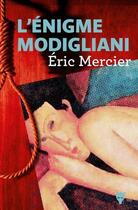Résumé:
Half a century after its publication, Pale Fire, one of Vladimir Nabokov's most brilliant achievements, remains a literary mystery. Despite the richness of its critical history and the ingenuity of two generations of readers, the ongoing debate about its narrative structure and the identity of... Voir plus
Half a century after its publication, Pale Fire, one of Vladimir Nabokov's most brilliant achievements, remains a literary mystery. Despite the richness of its critical history and the ingenuity of two generations of readers, the ongoing debate about its narrative structure and the identity of its narrator(s) still has not reached a definitive conclusion. This study chronicles the major stages of the novel's reception, from Mary McCarthy's groundbreaking review to Brian Boyd's striking metaphysical interpretation, and offers a critical assessment of the various theories put forward to account for the text's intricacies. This systematic analysis, which follows in the footsteps of Pierre Bayard and combines the methods of «detective criticism» with the use of the basic tools provided by narratology, leads to the refutation of a number of views and approaches to the novel, and induces a new exegesis resting on the central role played by a famous painting. The re-examination of the Pale Fire case generates a surprising solution to the novel's puzzle.
Donner votre avis















